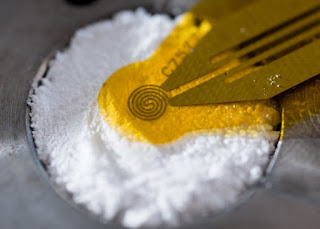The
human body is a marvel, but it’s not perfect. There can be a defect, things can
break, and illness can strike with little or no warning. If we could augment
ourselves with electronics, we might be able to solve some of these problems. But
such devices have traditionally presented issues of their own: They’re often
hard, rigid pieces of silicon and plastic. The body doesn’t react well to them,
and they don’t work well inside you.
A
team of researchers at the Massachusetts Institute of Technology may have hit
upon a solution. They’ve developed a new form of hydrogel – a water-based
polymer that can look and feel like muscles and tendons. Such a gel could
contain tiny electronics that can monitor our insides, deliver medicine, or
provide needed electrical stimulus.
Since,
the hydrogel is flexible, it can bend and twist without breaking or tearing. And
because much of the human body is made from similar materials, there’s little
chance we would reject the material as a foreign object. We’re still some years
away from US Food and Drug Administration approval, but should that happen,
this new breed of hydrogel may prove to be the foundation upon which an entirely
new class of medical devices is built.



